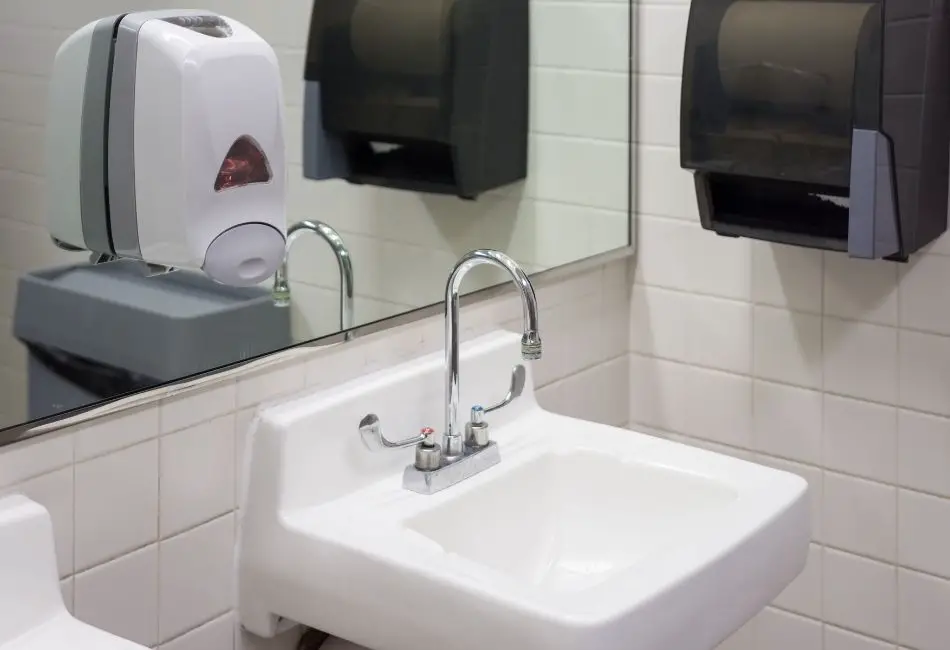Bathroom sinks can be made of different materials, but the two most popular types are porcelain and ceramic. If you’re in the market for a bathroom sink, you may be wondering if you should choose a porcelain sink or a ceramic sink. Both materials have their pros and cons, so it can be tough to decide which one is right for you. In this article, we will discuss the differences between porcelain and ceramic bathroom sinks and help you decide which one is best for your home.
What is the difference between porcelain and ceramic bathroom sinks?
Ceramic and porcelain sinks appear identical. However, porcelain is a type of ceramic. Porcelain bathroom sinks are made from clay that has been fired in a kiln at high temperatures and then glazed with an enamel coating. This makes them less porous which means they are more durable and stain-resistant.
While ceramic bathroom sinks have a similar composition, they are made from less refined types of clay. They are also fired at lower temperatures than porcelain bathroom sinks, which means their surfaces will likely be more porous and absorbent than those found on porcelain bathroom sinks.
You can also differentiate between porcelain bathroom sinks and ceramic bathroom sinks with the following:
- Model number: The easiest way to tell if a bathroom sink is porcelain or ceramic is to check the model number. The model number is located on the underside of bathroom sinks, and it will tell you what type of material was used to make it. If you are unsure, you can do some digging on the internet.
- Manufacturer’s website: If a bathroom sink doesn’t have a model number on its underside, check the manufacturer’s website for more information about your bathroom sink. It should have a description that tells you whether or not they’re porcelain bathroom sinks or ceramic bathroom sinks.
- Water absorption: Another way to tell if a bathroom sink is made of porcelain or ceramic is to check its water absorption rating. Porcelain sinks have a water absorption rating of 0.05% or less, while ceramic sinks have a water absorption rating of more than 0.50%.
- Color when chipped: Almost all high-quality porcelain bathroom sinks will have a consistent color that goes through from the top to the bottom of the sink when chipped. This is not the case with ceramic bathroom sinks, which can often have a mottled appearance when they chip. (Of course, you don’t have to go around chipping bathroom sinks just to know what they are made of… Haha)
Before you decide on a material for your bathroom sink, it’s worth considering the pros and cons of each type of material:
What are the pros and cons of porcelain bathroom sinks?
Pros
- Porcelain sinks are incredibly durable: Porcelain sinks are much more durable than ceramic sinks. The reason is that it goes through a more rigorous firing process at high temperatures and therefore comes out stronger than ceramic bathroom sinks. With proper care, it can last for many years.
- Porcelain sinks are more resistant to cracks: Porcelain is a very strong material, so it’s less likely to chip or break.
- Porcelain sinks are stain-resistant and easy to clean: They have a smooth surface that’s less porous than ceramic bathroom sink material, so they’re more resistant to staining than ceramic sinks. The sink surfaces do not absorb water, making them easier to clean. This makes them a popular choice for bathroom sinks. They also require very little upkeep, which makes them perfect for busy homeowners. That is not to say you don’t have to care for it from time to time.
- Porcelain sinks are more affordable: Compared to ceramic sinks, porcelain bathroom sinks are a bit cheaper.
- Porcelain sinks often have a sleek, modern look that can add style to any bathroom.
Cons
- Susceptible to chips: Despite their durability, porcelain sinks can chip when you drop heavy objects on them. Since we normally don’t carry heavy objects into the bathroom, you shouldn’t worry about this too much.
- Quite difficult to repair: When porcelain sinks get chipped or damaged, it is very difficult to repair and costly too. Most of the time the sink has to be replaced with a new one.
- Weight: Porcelain sinks are quite heavy and extreme caution needs to be taken in its handling.
- Designs and colors: Although porcelain bathroom sinks have different colors, they usually come in white.
- They are not eco-friendly because materials used are mined from the earth and the manufacturing process consumes a lot of energy.
What are the pros and cons of ceramic bathroom sinks?
Pros
- Ceramic bathroom sinks come in a variety of colors and styles: This is probably their biggest advantage over porcelain bathroom sinks as homeowners can find a style that suits their bathroom décor. They are available in a wide range of colors, shapes, and styles.
- They are resistant to scratches from everyday use. The quality of ceramic sinks doesn’t allow for easy scratching.
- Unlike other types of bathroom sinks, you can’t easily put a dent in ceramic bathroom sinks.
- They are one of the easiest materials to clean making them very easy to maintain.
Cons
- Ceramic sinks are fragile: Although you can’t easily dent a ceramic bathroom sink, they break easily when heavy objects fall on them. The glazes that give ceramic bathroom sink their color can also crack or chip if they receive a hard blow, leaving the sink vulnerable to staining and damage
- If environmental friendliness is a concern to you, then ceramic sinks won’t be your favorite because materials used are minded from the earth and it uses a lot of energy in processing it.
- To reduce the porosity of ceramic sinks, they must be glazed but even then they do absorb water over time.
- Ceramic bathroom sinks can be quite heavy and need to be handled with care during installation.
Which type of bathroom sink is right for you?
There is no one answer to the type of bathroom sink that is right for you. It depends on your needs and preferences. Your choice may be based on factors such as size, design, the material used, installation types, and even the kind of faucet holes. Both types of bathroom sinks are durable, easy to maintain, come in different shapes, and less likely to scratch. With this insight, the ultimate decision is up to you.

